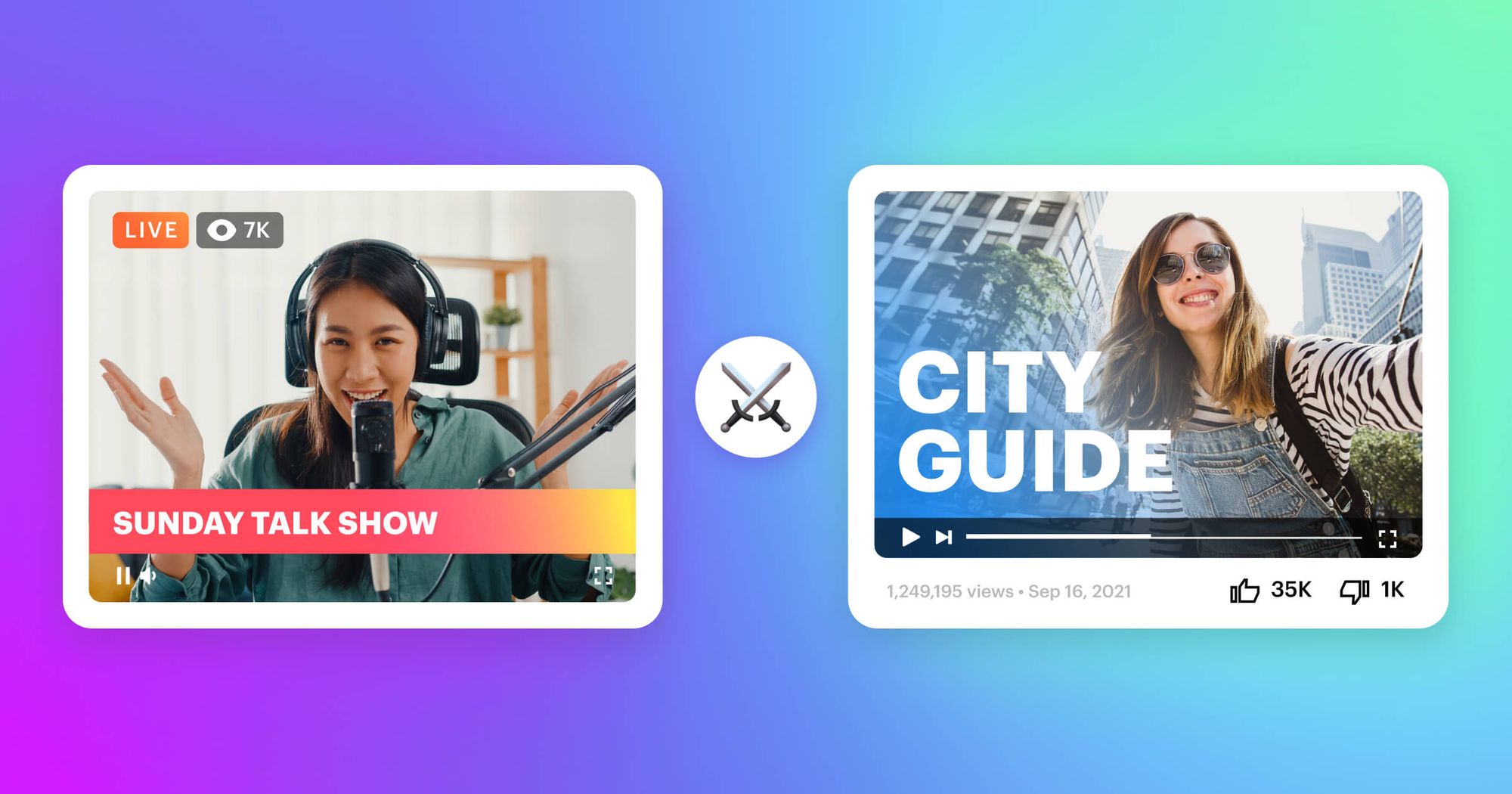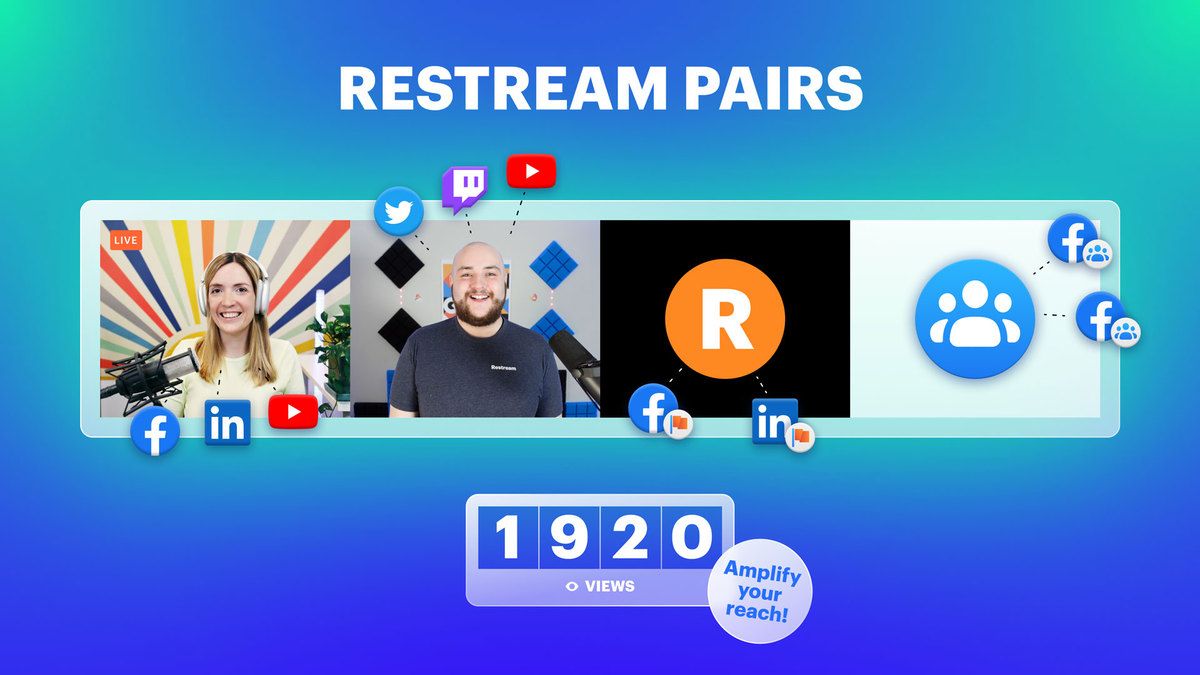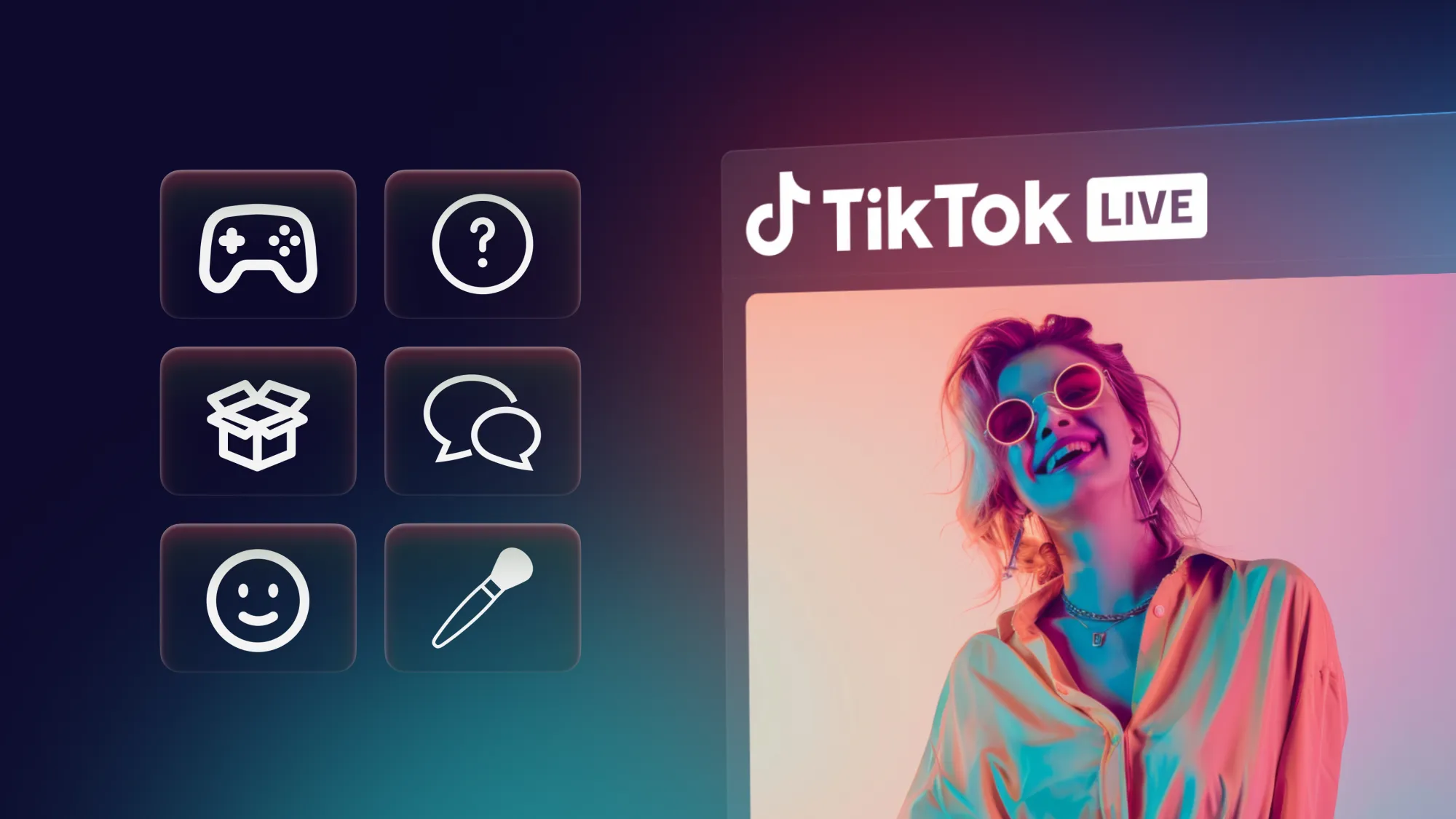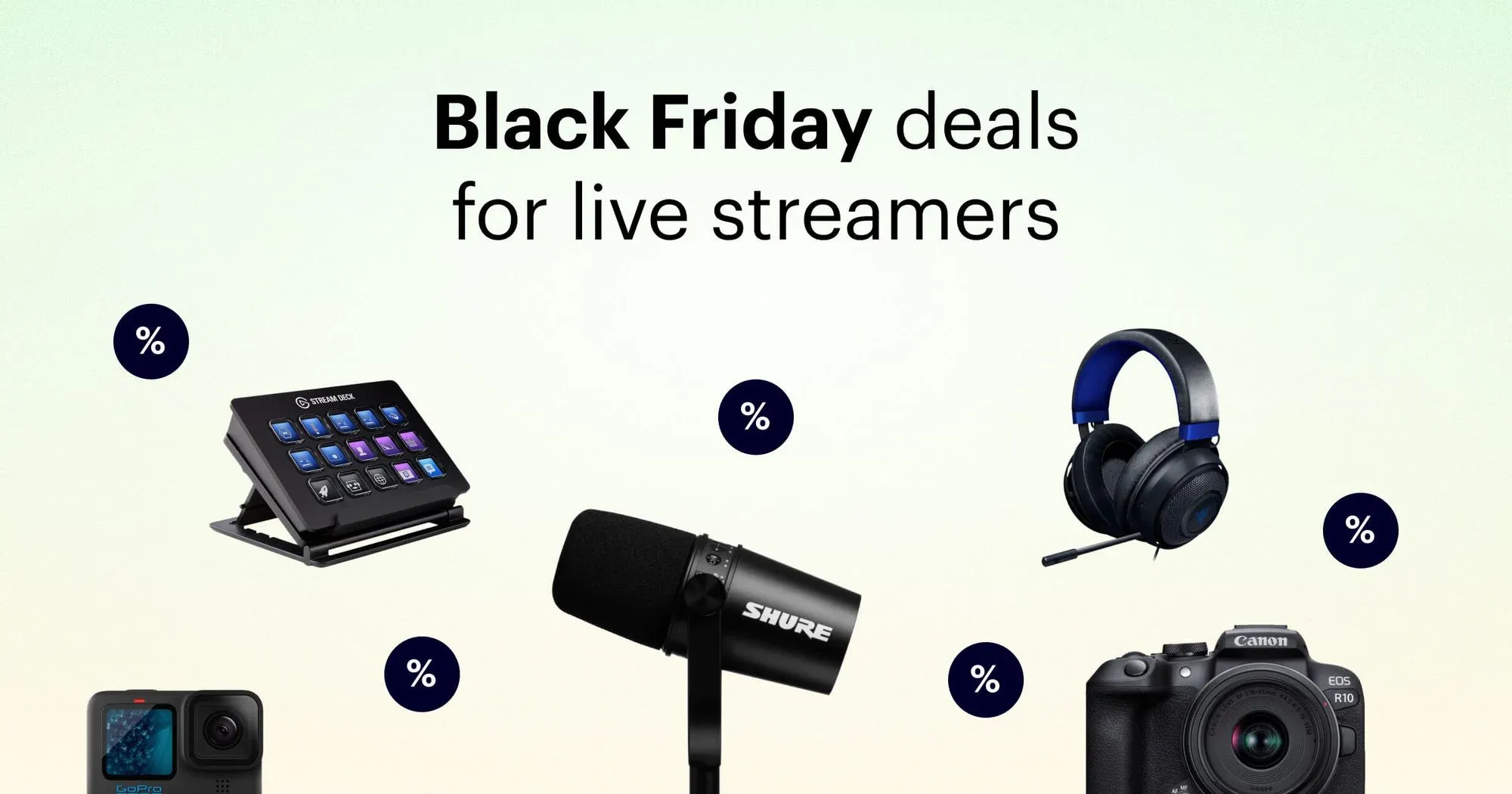Video is the most popular form of content on the web, and it will only keep growing. Cisco predicts that video-on-demand traffic will double by 2022 and that live video will account for 82% of all internet traffic.
With that many people watching videos, creators have to publish a lot of content to get noticed. When it comes to making videos, they typically have two choices: live streaming or video on demand (VOD). Both are suited to different formats, and each has pros and cons.
As a video content creator, you don’t have to choose one or the other. You can leverage both live streaming and VOD, and in this guide, we’ll show you how.
What’s so great about live streaming?
Live streaming encompasses more than just live news reporting and video games. Although these genres are some of the most popular for live streaming, other categories have taken off in the past year. Arts and crafts tutorials, live music and DJ sets, talk shows and podcasts, live competitions and giveaways, webinars, and many other types of live streaming content are available today.
What makes live streaming so popular?
- Low barrier to entry. The minimum setup you need to live stream is an internet connection, a smartphone, and a social media profile. This setup might not get you the best results, but it will work in a pinch.
- Time-effective. Live streaming may involve some pre-production. But there’s usually no post-production, unless you want to repurpose your live stream for later use (which you can read more about below).
- Immediacy. There’s no editing with live streaming. What viewers see is what the content creator points their camera at. They see it in real time, and they can engage with an event as it unfolds.
- Real-time interaction. Content creators and audiences can have a conversation during a live stream. Even if the live stream is going out to several channels at once, a tool like Restream Chat enables chatting on multiple channels in one central chat hub.
Live streaming is a content-delivery method that fosters engagement — so much engagement, in fact, that creators need special tools to stay on top of it.
That’s not to say that live streaming doesn’t have its drawbacks. Live streaming can be more technically demanding than traditional methods. It might require you to pick up additional gear, continuous power supplies for cameras, switchers for multi-cam setups, and capture cards for higher-end streaming. Upload speeds are also hugely important for live streaming. A high-quality stream can be demanding, but the engagement factor makes it worthwhile.
What about video on demand?
Video on demand is the traditional system of creating and sharing content. Make a video clip, upload it on a video-sharing platform like YouTube, and keep it there for the viewers to see it.
The VOD model has some obvious benefits:
- More time in production means fewer mistakes. You can always do another take when making videos for on-demand distribution. It lengthens the production process but makes a more polished product.
- The ability to use post-production. Post-production is where the magic of editing happens. With editing, creators can affect everything from the storytelling to the pacing of their videos.
- More creative tools. All in all, video on demand provides more opportunity for creativity than live streaming. The length of the production and post-production gives creators more time to plan and execute their ideas. Plus, creators can use tools that don’t work with real-time video content.
- Audiences find VOD convenient. On-demand platforms like Netflix are more popular than traditional pay-TV services or even broadcasting giants like the BBC in some segments of the audience. People want to be able to watch videos when they want to, not when the programming allows it.
For creators, the main selling point of VOD is the control they can exercise over its creation and publishing. For audiences, it’s the fact that they can watch it whenever they want.
VOD production can be difficult, however. It can easily turn into a never-ending series of revisions, getting stuck in post-production. Creators can spend so much time working on their video content that it becomes irrelevant or outdated by the time they publish it.
The lack of immediacy also means that on-demand content can never be as engaging as live-streamed content. Creators have to strike a balance between their perfectionism and timeliness, and they also have to pick topics that engage their audiences regardless of the on-demand delivery.
Why live streaming and VOD shouldn’t be mutually exclusive
When content creators get trapped in a “live streaming vs. VOD” mentality, they do it at their own loss. There’s nothing to be gained by choosing one type of content distribution over the other.
As a content creator, you stand to gain a lot from using both live streaming and VOD. You can repurpose live content for on-demand viewing or live stream a pre-recorded video. Each method has multiple use cases.
1. Repurpose live content for on-demand viewing
Repurposing a live stream for VOD is pretty straightforward. Some platforms, like YouTube, save a recording of your live stream to your channel or profile, so anyone can go back and view it at any time. But if you want to make edits or shorten it into bite-size segments for social media posts, you’ll have to download the recorded live stream and make modifications with an editing tool.
Some of the best use cases for repurposing live content are:
- Make a highlight reel of your stream by editing out mistakes or unnecessary frames. Post it on X (Twitter), Facebook, Instagram, or YouTube.
- Take a screenshot from the stream and add a quote over it. Do multiple images from the live stream and post them on your social media channels over several days.
- Make a teaser video of your stream and post it on Instagram to get people to watch the full replay.
- Edit it into a podcast by converting the recorded stream into an audio file and cleaning it up.
- Edit the live stream into a video and embed it in a blog post.
- Create a compilation of highlights from your old live streams.
To repurpose live streams into VOD or other types of content, you need the right tools. If you use Restream Studio, a browser-based live-streaming solution that lets you multistream to several platforms simultaneously, Restream will save a recording of each of your live sessions. You can easily download the recording and edit it with a transcription and editing software like Descript, which allows you to easily edit transcribed text from a video or audio file.
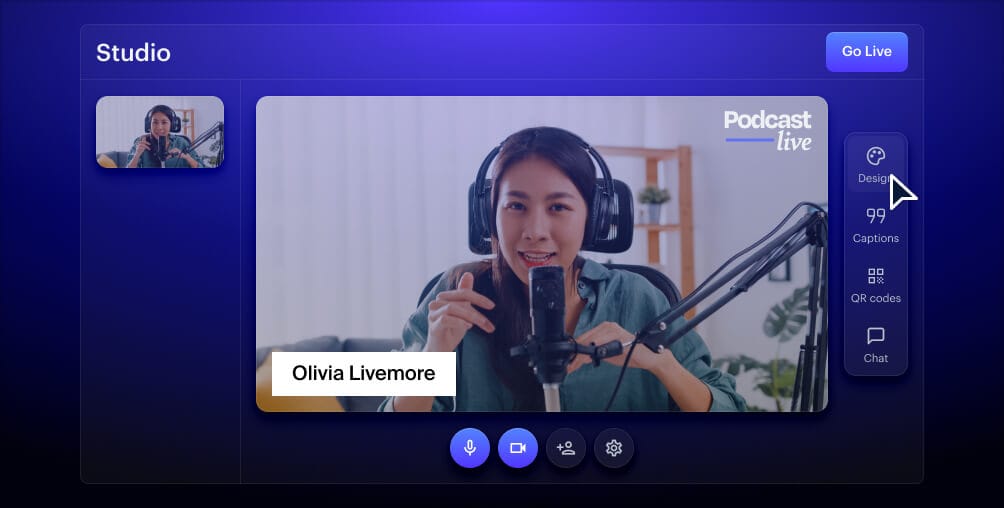
Create stunning live videos
Restream Studio is the easiest way to create high-quality live videos on multiple platforms at once. It's user-friendly and offers an engaging viewer experience.
With live-streaming features like split-track recording, adding custom graphics, playing copyright-free background music, sharing your screen, and inviting guests, Restream Studio makes cleaning up your live video easier.
2. Live stream pre-recorded content
With the right tools, it’s also possible to film and edit content and schedule it to go live later. How? Create your video and upload it to Descript, which will transcribe all the text for you. Edit the transcription like a Word document, hitting backspace on pauses, “umms,” and other flubs, and Descript will remove those frames from your video. Then, once your video is perfectly polished, export it from Descript to Restream (the two tools integrate!).
Once your edited video is in Restream Video Storage, you can schedule it to go live on any of your favorite platforms using Restream Events. Simply choose the time and date, and your video will broadcast live on all the platforms you’ve chosen simultaneously. It’s the no-stress way to create live video content!
As you can see, combining live streaming and VOD holds enormous potential for content creators. If you’re more comfortable with going live, you can use the repurposing method to create on-demand videos and get the most out of your content. And if you prefer filming and editing on-demand videos, you can still make them and schedule them to go live later. You get the best of both worlds.
Let’s wrap up
Creators cannot afford to pass up the potential of either VOD or live streaming. Just put in some extra work to benefit from different forms of content distribution, or even from different types of content.
As for the live vs. on-demand question? The answer is “both.” The tools exist to help you do both, so there’s no reason not to use them. Combine the power of live streaming and VOD to grow your audience and boost your engagement!

